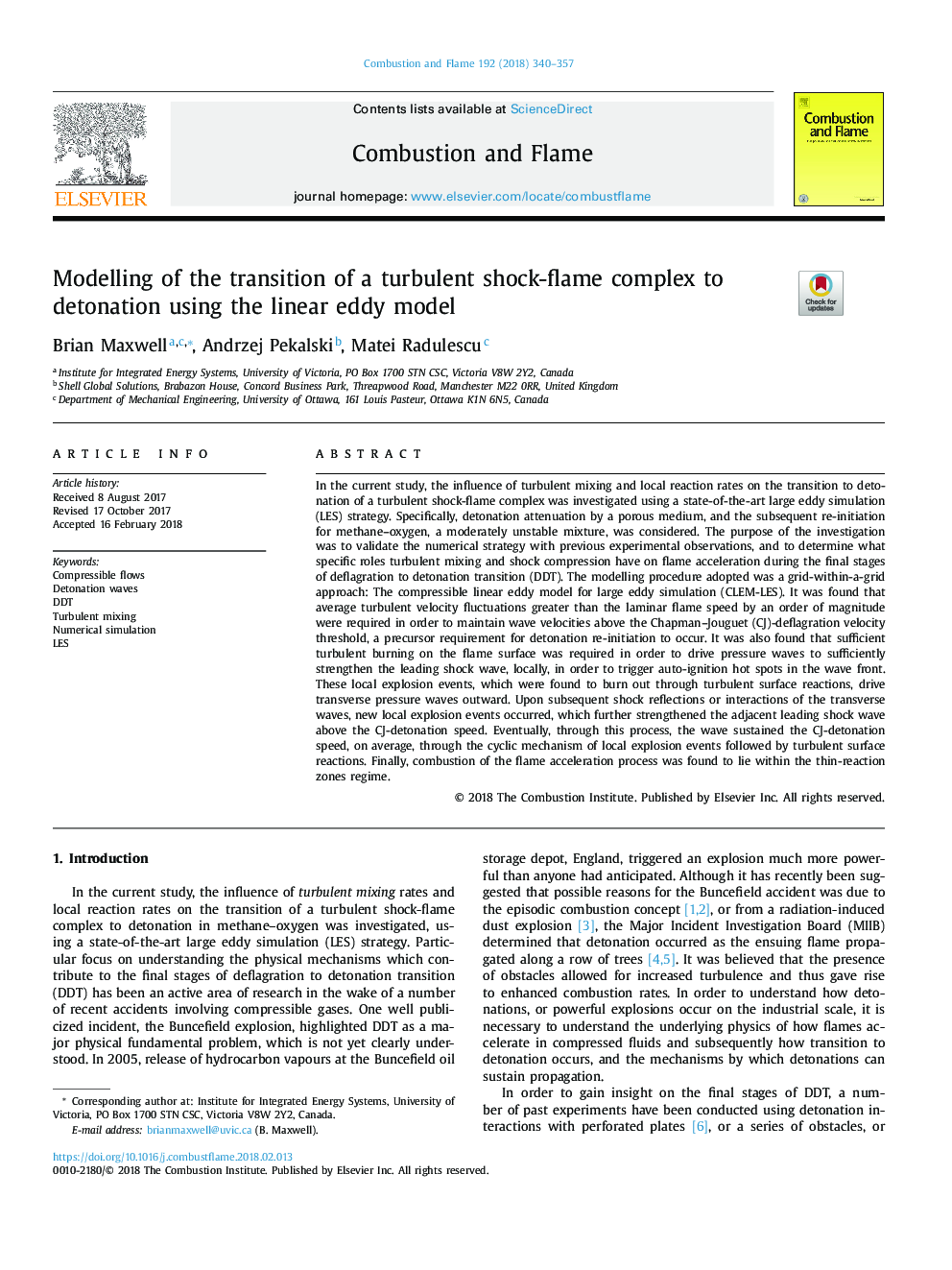| کد مقاله | کد نشریه | سال انتشار | مقاله انگلیسی | نسخه تمام متن |
|---|---|---|---|---|
| 6593684 | 1423545 | 2018 | 18 صفحه PDF | دانلود رایگان |
عنوان انگلیسی مقاله ISI
Modelling of the transition of a turbulent shock-flame complex to detonation using the linear eddy model
ترجمه فارسی عنوان
مدل سازی انتقال پیچیده شوک-شعله پیچیده به انفجار با استفاده از مدل چرخشی خطی
دانلود مقاله + سفارش ترجمه
دانلود مقاله ISI انگلیسی
رایگان برای ایرانیان
کلمات کلیدی
موضوعات مرتبط
مهندسی و علوم پایه
مهندسی شیمی
مهندسی شیمی (عمومی)
چکیده انگلیسی
In the current study, the influence of turbulent mixing and local reaction rates on the transition to detonation of a turbulent shock-flame complex was investigated using a state-of-the-art large eddy simulation (LES) strategy. Specifically, detonation attenuation by a porous medium, and the subsequent re-initiation for methane-oxygen, a moderately unstable mixture, was considered. The purpose of the investigation was to validate the numerical strategy with previous experimental observations, and to determine what specific roles turbulent mixing and shock compression have on flame acceleration during the final stages of deflagration to detonation transition (DDT). The modelling procedure adopted was a grid-within-a-grid approach: The compressible linear eddy model for large eddy simulation (CLEM-LES). It was found that average turbulent velocity fluctuations greater than the laminar flame speed by an order of magnitude were required in order to maintain wave velocities above the Chapman-Jouguet (CJ)-deflagration velocity threshold, a precursor requirement for detonation re-initiation to occur. It was also found that sufficient turbulent burning on the flame surface was required in order to drive pressure waves to sufficiently strengthen the leading shock wave, locally, in order to trigger auto-ignition hot spots in the wave front. These local explosion events, which were found to burn out through turbulent surface reactions, drive transverse pressure waves outward. Upon subsequent shock reflections or interactions of the transverse waves, new local explosion events occurred, which further strengthened the adjacent leading shock wave above the CJ-detonation speed. Eventually, through this process, the wave sustained the CJ-detonation speed, on average, through the cyclic mechanism of local explosion events followed by turbulent surface reactions. Finally, combustion of the flame acceleration process was found to lie within the thin-reaction zones regime.
ناشر
Database: Elsevier - ScienceDirect (ساینس دایرکت)
Journal: Combustion and Flame - Volume 192, June 2018, Pages 340-357
Journal: Combustion and Flame - Volume 192, June 2018, Pages 340-357
نویسندگان
Brian Maxwell, Andrzej Pekalski, Matei Radulescu,
